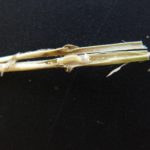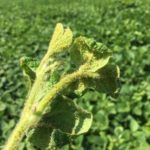
The economics of Western bean cutworm
For bean growers, it turns out this is a very different — and difficult — pest

Prairie insect outlook for 2018
Provincial websites offer a wealth of identification and monitoring information which is continually updated through the season

Protect your midge-tolerant wheat
The midge-tolerance gene was found in the majority of SWS wheats in 2017. Refuge seed is required to keep this trait in play

Six tips for managing wheat stem sawfly
Read more

More than cutworms “bugged” corn crops in 2017
Pests in 2017 have been a more complicated picture, based largely on a mixed bag of weather-related challenges
Read more

Some soybean aphids showing up so scout your fields
Read more

Preparing for western bean cutworm in 2017
#PestPatrol with Tracey Baute, OMAFRA
Read more

The swede midge threat
Swede midge continues to confound Near North canola growers, and it could migrate farther south
Read more

Crop pest scouts may gain from ‘app’lied knowledge
Insect ID is a challenge — but Prairie entomologists say there will soon be an app for that, and a whole lot more
Read more

Watch out for bollworms
Old World bollworm may be a severe threat to agriculture in North America
Read more


